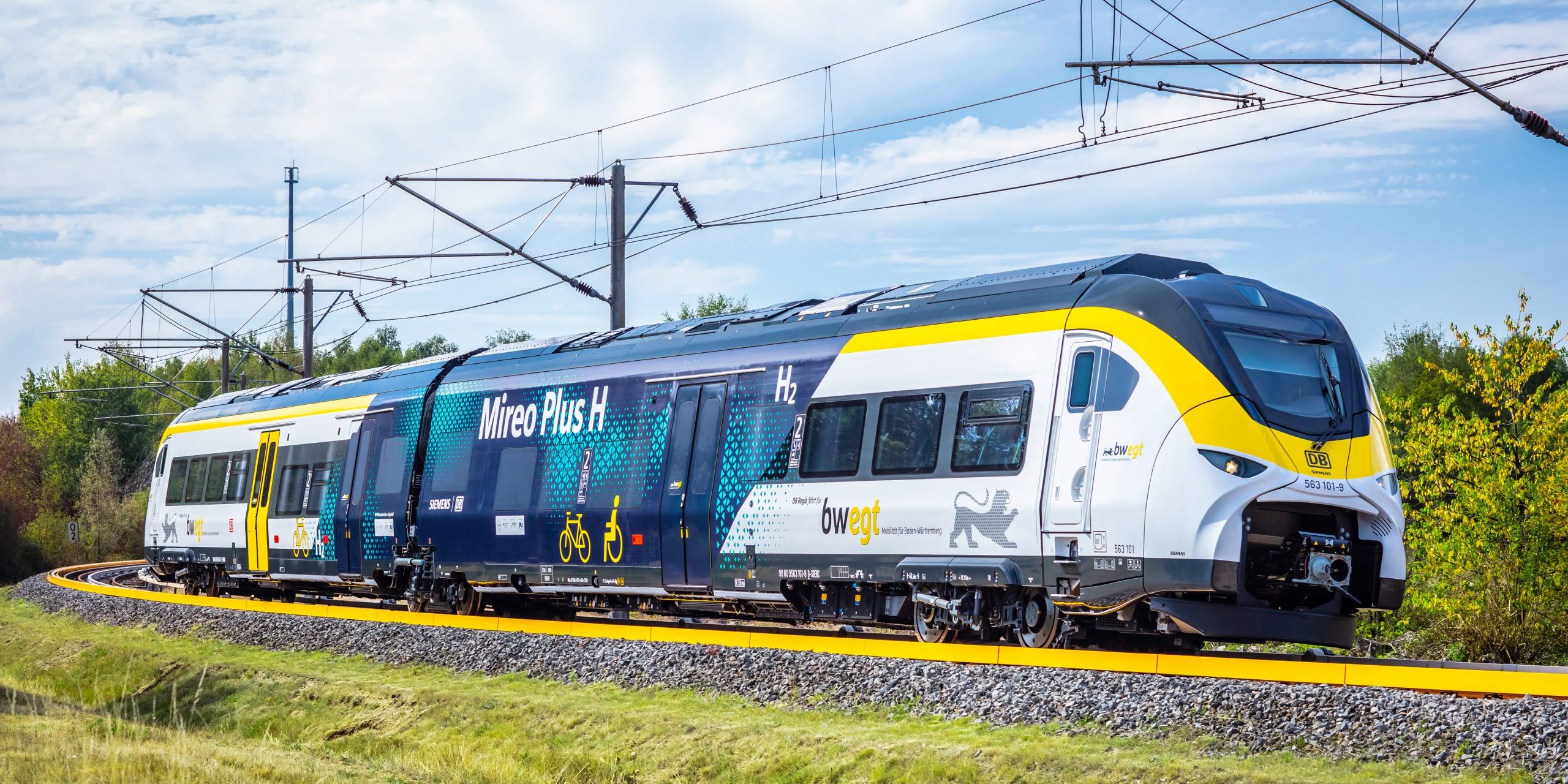With the presence of Hartmut Höppner, State Secretary in the Federal Ministry for Digital and Transport (BMDV), Siemens and Deutsche Bahn tested the Mireo Plus H hydrogen train and demonstrated the train’s refueling procedure using the mobile hydrogen station. The event was held at the Siemens Test and Validation Center in Wegberg-Wildenrath, North Rhine-Westphalia. This is a new milestone in the “H2goesRail” project, which was presented to the public in November 2020.
The project is being funded with €13.74 million by the Federal Ministry for Digital and Transport as part of the National Innovation Program for Hydrogen and Fuel Cell Technology. It is planned to have hydrogen technology replace diesel-powered trainsets in regional transport in the future and make a significant contribution to phasing out diesel fuel.
The Mireo Plus H developed for the H2goesRail project has a range of up to 800 kilometers, is as powerful as its electric multiple-unit counterpart, has 1.7 MW of traction power providing up to 1.1 m/s2 acceleration, and a top speed of 160 kilometers per hour.
One key factor needed to make hydrogen technology competitive with diesel fuel in daily operation is a fast refueling process. To provide this, DB has developed a new method that, for the first time, enables a hydrogen train to be refueled as fast as a diesel-powered train. This is especially important considering the closely timed scheduling of DB’s regional passenger service. Hydrogen for the trains will be produced in Tübingen by DB Energy with green electricity taken directly from the overhead power line.
“We are taking a decisive step with our partners toward the future of climate-neutral transport. The new Mireo Plus H train emits nothing but water. It has a range of around 1,000 kilometers, can reach speeds of up to 160 kilometers per hour, and can be refueled quickly. Over its service life of 30 years, a single train will save up to 45,000 tons of CO2 emissions compared to travel by car,” said Dr. Roland Busch, CEO of Siemens AG.
“Hydrogen belongs to the future of mobility. That’s why I am especially pleased that we have reached the next important milestone in the H2goesRail project today,” said Dr. Richard Lutz, CEO of Deutsche Bahn. “Our goal is clear: We plan for Deutsche Bahn to be climate-neutral by 2040. And one key lever here is bidding farewell to diesel fuel. With our development of a mobile hydrogen fueling station and its associated maintenance infrastructure, we at Deutsche Bahn are once again showcasing outstanding and innovative drive technologies and demonstrating how climate-neutral mobility of tomorrow will work.”
“Hydrogen technology has the potential to make sectors of mobility CO 2-neutral. This is a milestone for climate protection. The H2goesRail project demonstrates the innovative power that is being driven by the funding programs of the Federal Ministry for Digital and Transport in the field of alternative drives. We support the transfer from research and development to marketable products that is helping accelerate technological progress and creating the prerequisites for tomorrow’s climate-friendly mobility. Our goal is to develop and promote modern, quiet and climate-friendly mobility,” commented Secretary Höppner.
On the route between Tübingen and Pforzheim, for example, switching from diesel to the H2goesRail project train will save around 330 tons of CO2 emissions a year. In general, and depending on the route, the Mireo Plus H can save 520 tons of emissions per year (calculated on a total mileage of 200,000 kilometers). The Mireo Plus H will begin test runs in Baden-Württemberg in 2023. As of 2024, it will be underway in regular passenger service for the H2goesRail project, operating between Tübingen, Horb and Pforzheim and replacing a diesel railcar currently in use on that route.
Source: Siemens







